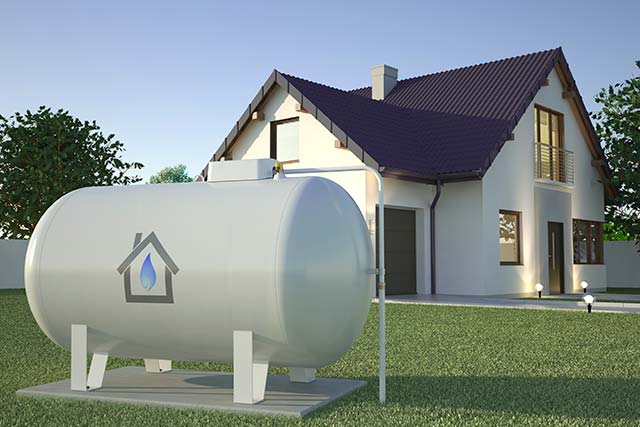Q&A: What Are Propane Tank Monitors?
Oct 12, 2023

Ensuring you maintain propane supply on your farm or in your home is crucial. If you’ve ever found yourself with an empty tank, you know just how problematic and stressful that can be. A tank monitor can help you out in a major way and bring peace of mind on your propane supply.
What are propane tank monitors?
Propane tank monitors are small devices about the size of your hand that are secured to the outside of your propane tank. These monitors track fuel levels through your propane tank’s dial. Once the monitor registers a reading, that information is transmitted back to an online dashboard and to a mobile application.
With access to a variety of features, propane tank monitors can help eliminate the likelihood of an empty tank, provide safety nets for your home and operations, and can be a great tool to improve your operations efficiency.
How can tank monitors improve the safety of my operation?
There are three main ways tank monitors can help improve safety. Monitors help reduce the consequences of an empty propane tank. Running out of propane is the last thing you’d want to happen on your home or your farm. An empty tank welcomes a variety of issues, including not correctly drying your grain, frozen or burst pipes, leaks within your propane system, or even an interruption of home and barn heating.
Propane tank monitors can also help you avoid downtime during peak propane demand. This can also lead to downtime as you wait for a leak check to be performed on your empty tank and gas system. Monitors also give you the flexibility of checking the propane tank status while you’re away. Whether you’re traveling or have a tank somewhere other than your primary residence, propane monitors allow users to check their supply quickly and easily by simply logging into the mobile app, giving you peace of mind directly at your fingertips.
Additionally, monitors are equipped with the rapid draw feature that can notify users that their propane is leaving their tank faster than expected. As a result, this can help you avoid costly downtime due to a system leak check, prevent future issues from arising, and keep your home and operation running safely and smoothly.
Aside from safety, what other features do tank monitors provide to improve my home and operation?
Propane tank monitors give you peace of mind with notifications that alert homeowners, producers and United Cooperative when it’s time for a refill. Users can set custom alerts to notify them when their tank reaches a certain low or critically low level. For example, you can get an alert when your tank is at 30%. You can also be notified when your tank has been filled. This means less time monitoring your tanks as there is no need to physically check your tank levels. The mobile app provides you with previous usage data. In return, this will help you become more efficient by allowing you to forecast your future needs.
To learn more tips to optimize your home and business’s propane gas system, please contact your local United Cooperative energy specialist.